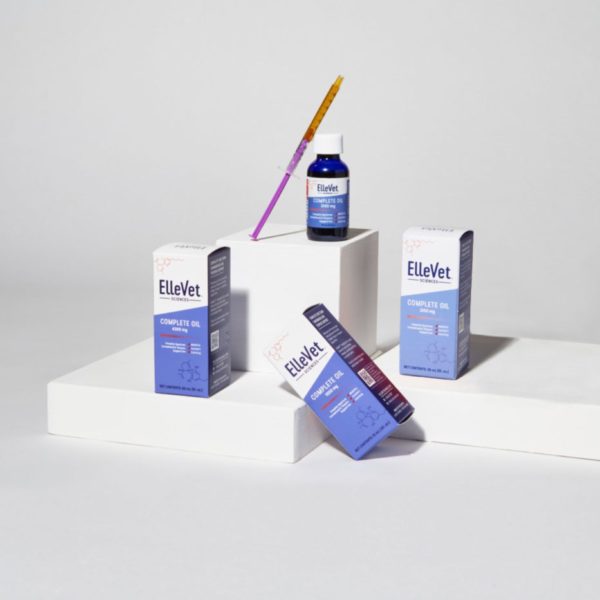Should I be Worried About the Lump on My Dog?
So, you are cozying up with your canine pal, and suddenly you feel a lump. Immediately, your mind goes racing: have I felt this lump before, and scarily: could this be cancer? There is good news: a significant number of the many masses found on pets are benign, meaning not cancerous. While knowing this fact may provide some initial ease to pet parents, getting a professional opinion from your veterinarian is important. Cancerous or not, developing a treatment plan for your pet is crucial for their prognosis.
4 Common Types of Non-Cancerous Lumps and Bumps
- Abscesses
What Is It? An abscess results from the body’s attempt to fend off an infection. The fight against infection accumulates white blood cells and other blood components commonly called pus. Bites, wounds, splinters, or even an insect sting can result in an abscess if the skin’s surface is penetrated.
Clinical Signs: Abscesses present as liquid collected in a fleshy pocket in the tissue that swells and becomes very painful. The signs of an abscess include a soft swelling, often with drainage of green, yellow, or even bloody pus from the infected site. It’s common for a dog with an abscess to develop a fever, act lethargic, lose appetite, or become reluctant to move or have the area touched.
Treatment: A veterinarian will drain and flush the abscess. An abscess can be painful, and there are times when a dog must be anesthetized before the vet can treat it. Your veterinarian may recommend warm, wet compresses to help the sore come to a head; additionally, clipping long hair away from the infected area will make sure that the hair does not hold bacteria in place. Often, oral antibiotics are prescribed for an abscess. While a small abscess may drain naturally, most abscesses left untreated can spark an infection that spreads throughout the body – so make an appointment to see your veterinarian!
- Hematomas
What Is It? Hematomas in dogs are a result of burst blood vessels which cause blood-filled blisters. They form under the skin and are common on dogs’ ears. They often form in response to injury, trauma, or other irritation.
Clinical Signs: Symptoms of hematomas in dogs depend on where the hematomas are located. Hematomas under the skin will cause swelling, discoloration, deformity when located on the ear, pain and aversion to touch, as well as scratching or head shaking. A hematoma can form internally and not just under the skin. These internal blood blisters have varying signs and complications depending on the organs they affect.
Treatment: Hematomas should be treated as soon as possible or permanent disfigurement may result. The preferred treatment method involves surgical correction. The actual surgical technique varies with the individual circumstances and your vet’s preference. As well as treating the hematoma, it is crucial also to treat the underlying cause, which can be an infection or a foreign body. If left untreated, the hematoma may be slowly reabsorbed, but the associated inflammation will have caused damage to the surrounding ear tissues. Additionally, a hematoma can be very painful and should be treated for your pup’s comfort and health!
- Sebaceous Cysts
What Is It? Sebaceous cysts are a common benign skin lump that occurs in dogs. In a dog’s skin, there are many microscopic structures called sebaceous glands. A sebaceous cyst is an opening of the ducts within the gland, which causes fluid to accumulate. Follicular cysts, sac-like structures often associated with the hair follicles, are common and generally included under sebaceous cysts. Some dogs are genetically prone to developing sebaceous cysts, while others can develop cysts due to skin infections, scar tissue, trauma, or inflammation.
Clinical Signs: A sebaceous cyst typically appears as a small, raised, well-defined round structure in the skin. It may feel either firm or like it is filled with fluid. Sebaceous cysts can rupture and may discharge fluid, pus, or blood. The lump can range from 0.5 cm to 5 cm in size; it is slow-growing and may not bother your pup at all.
Treatment: Cysts are typically benign and slow-growing, so treatment might not be needed. No matter what, though, consult your veterinarian to determine the best plan of action. It is best not to try to pop these cysts at home, as this can cause inflammation and infection and be painful for your dog. If the cyst is growing or bothering your dog, your veterinarian may recommend surgery to remove it.
- Lipomas
What Is It? A lipoma is the most common benign mass found on dogs, and it is made up of exclusively fat cells. The majority of lipomas are located just under the skin. Overweight and senior dogs are most prone to these benign growths, but lipomas are not exclusive to these groups.
Clinical Signs: Most lipomas are smooth, round masses in the skin. Unlike an abscess or mast cell tumor, they tend to be movable and are not painful to the touch. Many dogs will present with multiple lipomas on their body at once.
Treatment: While lipomas don’t usually pose any serious health threat, your veterinarian may recommend removal if they limit your dog’s mobility or grow too large. If a lipoma grows aggressively, it can become difficult to remove depending on the location. Your veterinarian can identify a lipoma by doing a needle aspirate; wherein a small needle is used to suction a sample of cells directly from the tumor, which is then examined under a microscope.
As pet parents, it can be scary to identify potential health problems with your pup, especially as they cannot tell us how they feel or if they notice a lump. It is essential to consult your veterinarian no matter what to determine the best plan of action for your pet.
The ElleVet Team
844-673-7287
[email protected]
-
 ElleVet Hemp CBD + CBDA Oil For Dogs$70.00 – $229.95
ElleVet Hemp CBD + CBDA Oil For Dogs$70.00 – $229.95 -
 ElleVet Hemp CBD + CBDA Chews$79.95 – $89.95
ElleVet Hemp CBD + CBDA Chews$79.95 – $89.95 -
 ElleVet Hemp CBD + CBDA Soft Gels$39.95 – $139.95
ElleVet Hemp CBD + CBDA Soft Gels$39.95 – $139.95 -
 ElleVet Calm and Comfort Chews$14.95
ElleVet Calm and Comfort Chews$14.95

